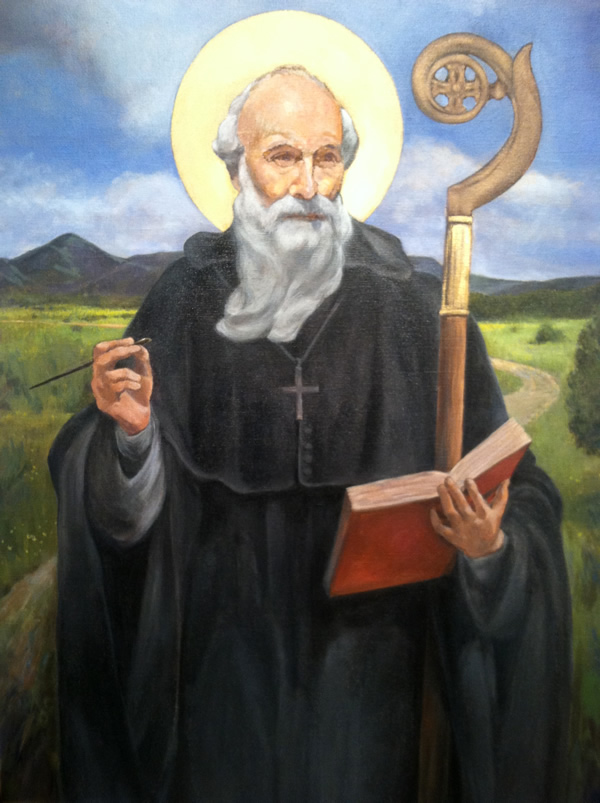 |
| St. Benedict |
Benedict was born in Norcia, Italy. What is known of this Christian hero is drawn almost entirely from his biographer, (St.) Gregory the Great, who records the life and miracles of the great monastic founder in the second book of his Dialogues.
Although Benedict began higher studies at Rome, the depraved lives of his fellow students led him to abandon the city and to seek solitude in the nearby mountains of Subiaco. For three years he lived in a cave as a hermit until disciples came and a community eventually formed around him. Gregory relates that the community grew into 12 monasteries of 12 monks each.
The jealousy of a neighboring priest, however, forced Benedict to leave Subiaco and to establish a monastery at Monte Cassino (c. 523 c.e.). The hill on which this monastery was established is at a strategically important position beside the road that leads from Rome to Naples. Since no one could have occupied such a site without government approval, Benedict must have had connections at court.
  |
His fame also spread to the invading barbarians, as we learn from the story of his meeting with Totilla, the king of the Goths, who stopped to visit the man of God on his way to sack Rome. Totilla was impressed by the holiness and prophetic gifts of the abbot, which may account for his subsequent entrance into the Eternal City without destroying it.
When Benedict first took possession of Monte Cassino, he found at the summit a temple to Apollo, whom the local inhabitants at the foot of the mountain were still worshipping. The holy abbot tore down the altar to Apollo, turned the temple into a chapel dedicated to the famous saint Martin, and converted the local inhabitants.
Gregory also relates that Benedict had a sister, (St.) Scholastica, who—also consecrated to virginity—would visit him once a year. When she died, Benedict laid his sister to rest in a tomb he had prepared for himself and which he would soon (within 40 days) come to share with her in death (c. 547).
Benedict’s greatest gift to posterity is his Rule, which outlines a way of life founded on the Holy Scriptures and on several monastic rules prior to Benedict. Benedict’s life spanned a time of political upheaval in Italy, as the barbarian tribes slowly gained control of the peninsula.
Within 30 years of his death the Lombards destroyed Monte Cassino. (The monastery would undergo several destructions and rebuildings in its history, down to a famous World War II bombing and subsequent reconstruction.)
The Rule of St. Benedict was followed in other monasteries at first in a mixed form, alongside other monastic rules. It began, however, slowly to supersede other rules, due primarily to its intrinsic wisdom and moderation but also to its relation to Gregory the Great and thus to Rome and to the authority of the pope.
This was the case in England, which has the oldest extant copy of the Rule dating to the first half of the eighth century. And it was also an Anglo-Saxon, the missionary Boniface, who promoted the Rule of St.
Benedict in the Frankish kingdom at the “German Council” of 743 on the continent. A year later Boniface founded the abbey of Fulda in Bavaria, which is the first known abbey to follow only the Rule of St. Benedict.
Its rise to universal prominence, however, was the work of Benedict of Aniane who convinced Emperor Charlemagne—who was looking for a way to unify and reform the monasteries of his realm—that Benedict’s Rule was the most balanced and moderate of all the existing rules, capable of being adapted by each monastic house, and had in its commitment to the scriptures and the liturgy the cultural element Charlemagne needed for his reform.
The emperor and his successor, Louis the Pious, then imposed the Rule of St. Benedict on all the monasteries (c. 816). Benedictine monasteries flourished and spread throughout the world.